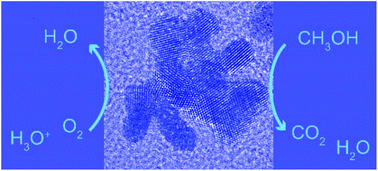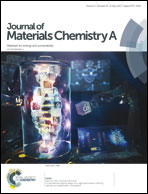Tuning the branches and composition of PtCu nanodendrites through underpotential deposition of Cu towards advanced electrocatalytic activity†
Abstract
Controlled synthesis of Pt-based bimetallic nanocrystals with a tunable size and structure has demonstrated great potential to advance their electrocatalytic performances. We present herein a facile but effective strategy for the rapid aqueous synthesis of PtCu nanodendrites (NDs) with advanced electrocatalytic performance. The systematical investigation on the influence of reaction conditions on the formation of PtCu NDs reveals that the underpotential deposition of Cu not only accelerates the growth of NDs but also significantly modulates their size and branch structure as well as their composition. Electrochemical tests demonstrate that Pt55Cu45 NDs with a smaller size and fewer branches but a higher content of Cu exhibit the highest electrocatalytic activity for both the oxygen reduction reaction and the methanol oxidation reaction, compared with Pt92Cu8 NDs, Pt NDs and commercial Pt/C. These results may inspire the engineering of a wide range of metallic alloyed nanocrystals to advance their electrocatalytic performances for diverse applications.



 Please wait while we load your content...
Please wait while we load your content...